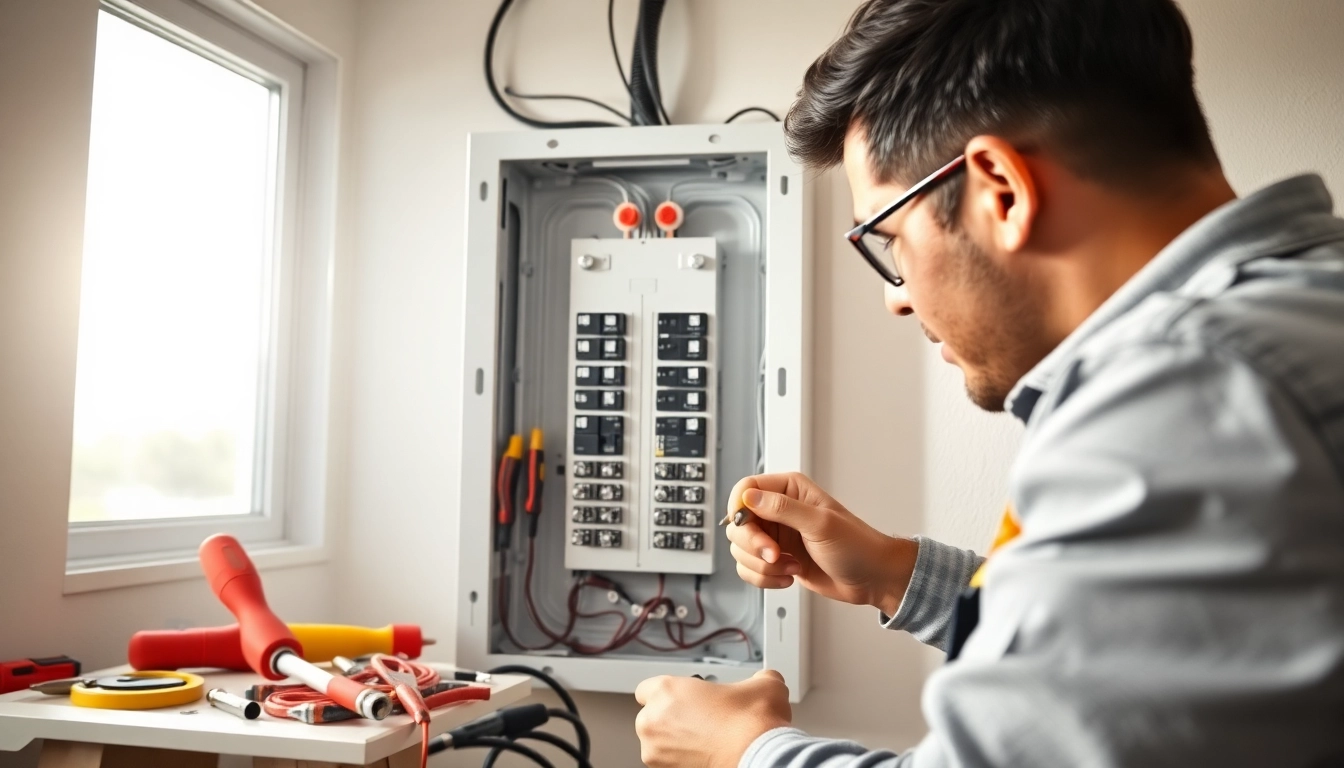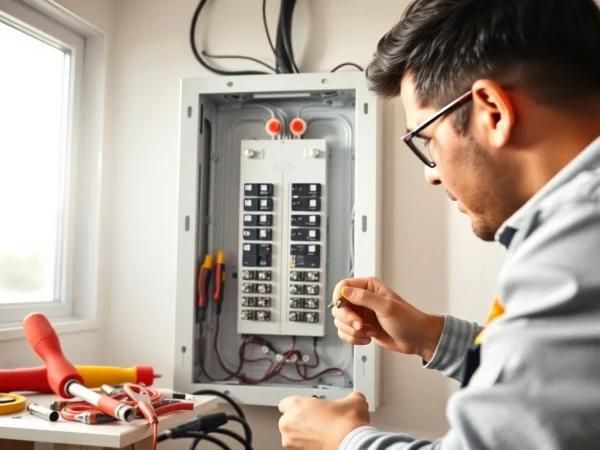When to Upgrade Your Electrical Panel: Key Signs and Benefits
Understanding the Electrical Panel: Basics and Importance
An electrical panel, often referred to as a breaker box or fuse box, is a critical component of your home’s electrical system. This device serves numerous key functions, playing a vital role in ensuring that electricity is safely and efficiently distributed throughout your home. It’s essential to understand its structure, operations, and the signs indicating when it might be time for an upgrade. For deeper insights into the importance of an Electrical Panel, we will explore various aspects in detail.
What is an Electrical Panel?
At its core, an electrical panel is a metal box that houses circuit breakers or fuses, designed to protect electrical circuits from overload. It serves as the control center for your home’s electrical system, taking electricity from the utility company and distributing it to the various circuits in your house. A well-functioning electrical panel ensures that your electrical system is safe and efficient.
Key Functions of an Electrical Panel
The primary functions of an electrical panel include:
- Distribution of Electricity: Channels power to various circuits throughout the home, ensuring all devices receive the appropriate voltage.
- Protection Against Overloads: Circuit breakers are designed to trip and cut off power in case of overload or short circuits to prevent electrical fires.
- Control of Circuitry: Enables homeowners to individually control the power flow to different areas or devices in the house.
- Monitoring Energy Flow: Facilitates the monitoring of electrical usage, allowing households to manage and reduce electrical consumption effectively.
Common Terminology Related to Electrical Panels
Understanding specific terms can help you navigate discussions about electrical panels:
- Breaker: A switch that automatically stops the flow of electricity to prevent circuit overload.
- Service Feeder: The cable that delivers electricity to the electrical panel from the utility company.
- Load Center: Another term for the electrical panel, referring to its role in managing loads of electricity.
- Subpanel: A smaller electrical panel that distributes power to specific areas of a home, such as a garage or workshop.
Signs You Need an Electrical Panel Upgrade
Recognizing the signs that your electrical panel needs an upgrade is essential for maintaining electrical safety and efficiency. Here are the most common indicators:
Inadequate Power Supply for Modern Appliances
Today’s households are equipped with a wide range of electrical appliances and devices that consume significant power. If your current electrical panel provides only 60 amps, it may not be sufficient for modern demands, especially if you have high-power appliances like HVAC systems, ovens, and electric vehicles. An upgrade to a more powerful panel, typically ranging from 100 to 200 amps, may be necessary to accommodate these increased power requirements.
Frequent Tripped Breakers and Blown Fuses
Experiencing frequent tripped breakers or blown fuses can be a sign of an overloaded circuit, inadequate wiring, or a failing electrical panel. If you find yourself constantly resetting breakers or replacing fuses, it’s a clear signal that your electrical panel may not be functioning as it should, requiring an upgrade to improve capacity and efficiency.
Visible Signs of Electrical Damage
Sometimes, physical symptoms can indicate a need for an electrical panel upgrade. Look for the following:
- Burn Marks: Burn marks around the electrical panel or outlets indicate overheating and signal potential fire hazards.
- Corrosion: Signs of corrosion or decay in the panel are strong indicators that it is time for a replacement.
- Buzzing Sounds: Unusual noises coming from the panel may indicate loose connections or faulty components.
Types of Electrical Panels: Choosing the Right One
When considering an upgrade, it’s important to understand the different types of electrical panels available to make an informed decision. The right choice can significantly impact energy efficiency and safety for your household.
Standard vs. Smart Electrical Panels
Standard electrical panels offer basic features for controlling power distribution and protecting circuits. However, with the advent of smart technology, smart electrical panels have emerged, offering enhanced functionalities:
- Smart Panels: Equipped with connectivity features that allow homeowners to monitor and control energy usage remotely via smartphones or computers. They can alert homeowners to problems and inefficiencies, enhancing energy management.
- Standard Panels: Typically more affordable but lack the advanced features and monitoring capabilities found in smart panels.
Understanding Amp Ratings for Your Home
The amp rating of an electrical panel is a critical factor that determines its capacity to handle electrical loads. Common ratings include:
- 60 Amps: Generally considered outdated and inadequate for modern homes.
- 100 Amps: Suitable for smaller homes with basic electrical needs.
- 200 Amps: Ideal for larger homes or homes with significant electrical demands from appliances and devices.
Assessing your home’s electrical needs can help determine the appropriate amp rating for your panel.
Popular Brands and Models of Electrical Panels
When choosing an electrical panel, consider reputable brands known for their reliability and safety. Popular options include:
- Square D: Renowned for offering a range of reliable and high-quality panels.
- Siemens: Known for its innovative designs and energy-efficient models.
- Eaton: Trusted for its wide range of panels and circuit breakers designed for both residential and commercial use.
The Process of Upgrading Your Electrical Panel
Upgrading your electrical panel is a significant investment and should be approached methodically. Here’s how the process typically unfolds:
Initial Assessment and Planning
The first step is assessing your current electrical system. An electrican will review your wiring, load needs, and local electrical code compliance requirements. They can help determine the size and type of panel you need based on your household’s power demands.
Hiring a Qualified Electrician
Choosing a licensed electrician is crucial for ensuring the upgrade is done safely and correctly. Look for professionals with experience in residential electrical work. Ask for references, check reviews, and ensure they are familiar with local building codes.
Installation and Testing of the New Panel
Once the new electrical panel is selected and the electrician is on board, the installation process can begin:
- Power Disconnection: The power from the local utility will need to be disconnected for safety during installation.
- Panel Removal: The old electrical panel will be removed, and wiring will be inspected.
- New Panel Installation: The electrician will install the new panel, connecting the existing wiring and ensuring correct configurations.
- Testing: After installation, thorough testing will be conducted to ensure everything functions properly and safely.
Cost Considerations and Long-Term Benefits
Understanding the costs associated with upgrading your electrical panel, as well as the long-term benefits, can help you make an informed decision.
Typical Costs Associated with Electrical Panel Upgrades
The cost of upgrading an electrical panel can vary widely based on factors such as location, labor costs, and complexity of the job. On average, homeowners can expect to pay between $1,000 and $3,000 for the entire installation, which includes materials and labor. A typical breakdown of costs might include:
- Panel Costs: $250 – $500
- Labor Costs: $500 – $1,500
- Additional Materials: $100 – $400
Energy Efficiency and Safety Improvements
An upgraded electrical panel often leads to greater energy efficiency. Newer models typically come with better technology and features, enabling households to monitor energy use more effectively. This not only helps reduce utility bills but also promotes a safer home environment.
Long-Term Value for Homeowners
Investing in an upgraded electrical panel increases your home’s value. Homebuyers are often willing to pay more for homes with modern electrical systems because they reduce the risk of electrical failures and fires. A well-functioning panel also aligns with modern energy standards, providing peace of mind regarding safety and reliability.
Conclusion
In conclusion, understanding your electrical panel and recognizing when it’s time for an upgrade is crucial for homeowners. By being aware of the key functions of electrical panels, the signs of malfunction, and the various options available for upgrading, you can ensure that your home remains safe, efficient, and valuable. Regular maintenance and updated systems not only enhance your quality of life but also fortify your investment in your property.










